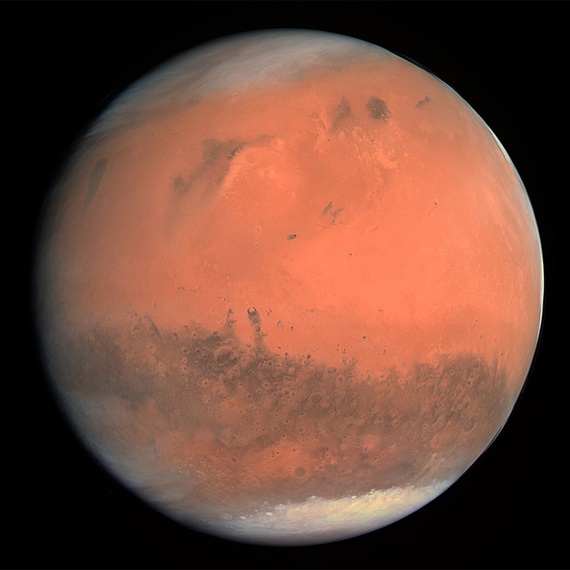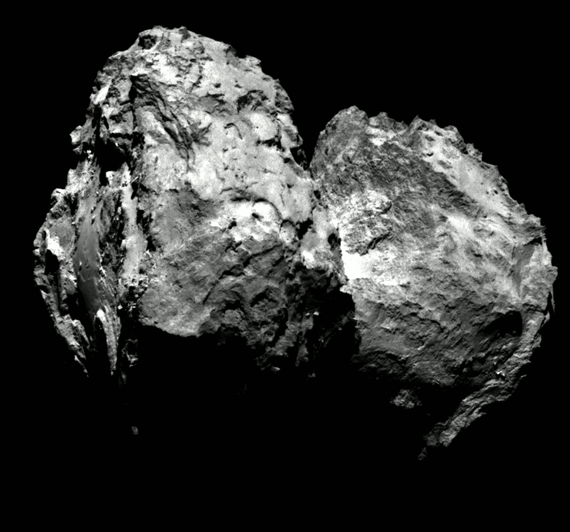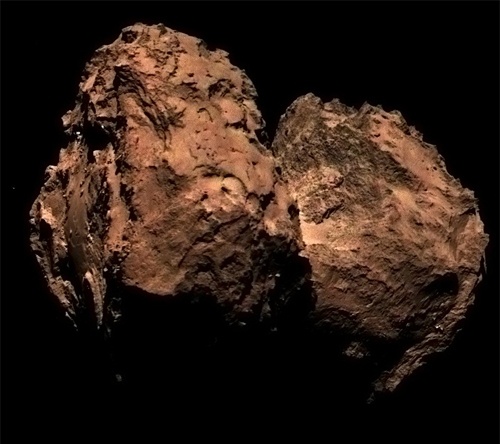After months of painting Comet 67P's barren surface with shades of grey, the Rosetta spacecraft has finally released its first colored image of the space rock, which show valleys, cliffs, and craters as a dusty mix of red and brown.
The European space probe used its high-powered camera OSIRIS to create the stunning “true color” photo of the Manhattan-sized comet. But according to Science, Rosetta's researchers have had colored images of Comet 67P/Churyumov-Gerasimenko since early November. Some of the images were presented at a planetary science conference in Tucson, Arizona, but not released to the public.
So why has it taken so long for space enthusiasts to awe over these colored images?
One reason is because Rosetta researchers walk a tightrope between sharing their findings and images with the public, and withholding their hard-earned results until they can be published in a prestigious journal. Some instruments upon the Rosetta mission have embargoes placed on their findings, which prevent their results from being publicized, sometimes for months. The positive side of the hold is that it allows scientists time to verify and reverify their findings. But it also keeps science fans temporarily in the dark.
Another reason for the delay is that most images that Rosetta has beamed back were taken with its on-board navigation camera, NAVCAM. This tool only takes grey-scaled images. The new colored photo was captured using Rosetta’s OSIRIS camera, which stands for Optical, Spectroscopic, and Infrared Remote Imaging System. It consists of a narrow-angle camera with 12 filters and a wide-angle camera with 14 filters, that allow the instrument to capture wavelengths of light beyond what the human eye can see. The instrument then combines images from its blue, green, and orange filters to present a “true color” photo. The OSIRIS camera previously took jaw-dropping true color images of Mars when it passed by the red planet in 2007 during its arduous trek to Comet 67P.

The new “true color” image does not necessarily show the comet as it would appear to someone who is riding on Rosetta. As the ESA said, comets like 67P are “blacker than coal.” Stubbe Hviid, a co-investigator on the Rosetta mission, reaffirmed this statement to Motherboard in an email: “If you looked at the comet with human eyes it would basically be black.” He added that unless you shine a complete white light on the comet, it would not appear the way it does in the photo.
Still, the image illuminates the duck-shaped space rock for astronomers looking to gather scientific data. It was released accompanying an online abstract for a presentation that will be shown December 18 at the American Geophysical Union in San Francisco. At the meeting the scientists will also present new findings, as well as higher-resolution colored-comet images from Rosetta. The current image is bit blurry because as some Reddit users noted, the comet moved between camera exposures.

Meanwhile, other Reddit users have already taken to cleaning up the image with Photoshop:

(Reddit)
Although previous black-and-white pictures of Comet 67P have shared nail-bitting, historic moments with millions, such as Philae's triple touchdown and its landing in a ditch, science enthusiasts will just have to wait before continuing the adventure in color.
This article was originally published at http://www.theatlantic.com/technology/archive/2014/12/Rosetta-Spacecraft-Releases-First-Color-Photo-Comet-67P-Churyumov-Gerasimenko-European-Space-Agency/383336/
